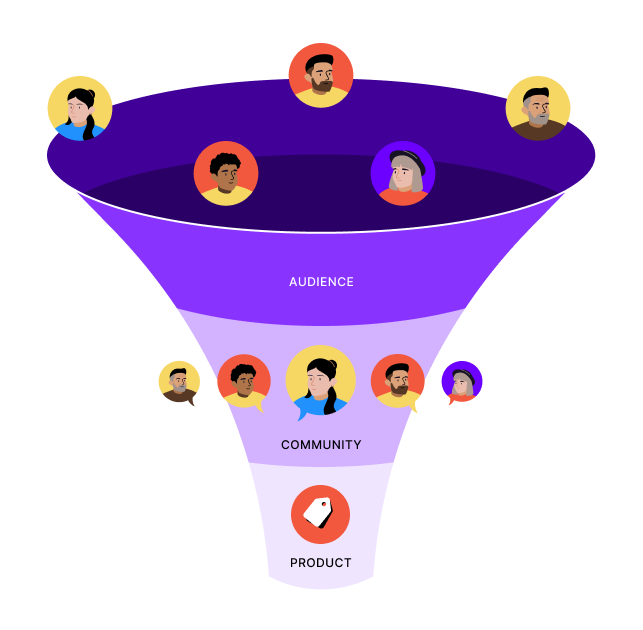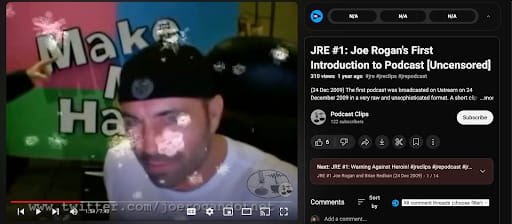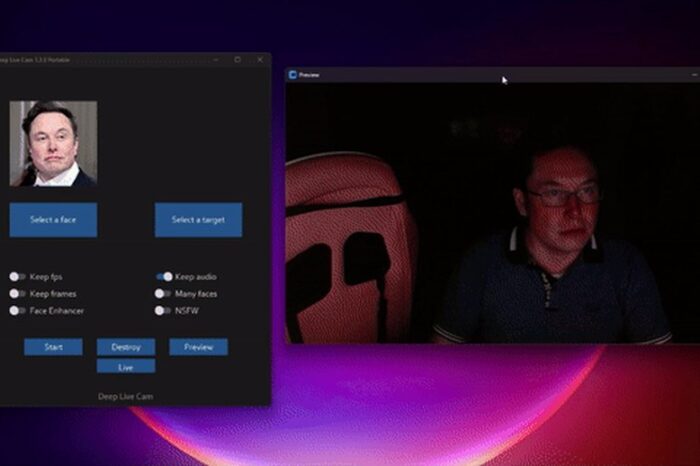How to Build an Audience for Your Startup Business and Product

In a crowded landscape where countless startups vie for the same customers, what truly sets the winners apart is their audience. Yes, audience! You could launch the most perfect product, but if no one knows it exists, it’s just another idea lost in the noise. This is the challenge founders face today.
Savvy founders understand that launching a startup or a new product is only half the battle. The real challenge lies in getting people to notice, engage, and ultimately become loyal users or customers. That’s where building an audience comes in.
Peter Levels, the brain behind four thriving startups, nailed it with his formula: Audience, Community, and Product (ACP) Funnel. ACP isn’t just a catchy acronym—it’s the backbone of a successful business in 2024. Sure, you could snag a fleeting spotlight on platforms like TechCrunch or ProductHunt, but that buzz fades fast.
Drawing from his experience, where only four out of seventy projects hit the mark, Levels emphasizes that without the enduring support of an audience and community, even the best product can fall flat.
Audience, Community, and Product
Build Audience First
The old playbook relied on buying attention—TV ads, billboards, and classifieds. Get the spotlight, and you could push your product. But times have changed. Your customers are online, and the era of force-feeding ads is over. The new game? Start with building an audience.
Define your target audience: Identify who will buy your product and why. Paint a clear picture of your ideal customer.
Understand your audience: Know who your stakeholders are and have a strategy to engage them.
Create a compelling story: Craft a narrative that resonates. Use product marketing to nail your positioning and messaging. Your audience isn’t just a group of followers—they’re the bedrock for building a thriving community. And without them, you won’t have a community, which brings us to the next point.
Build Community
Humans are wired for connection. We’ve evolved from small tribes to globally connected beings, yet technology has left many feeling more isolated than ever. There’s a gap, and people sense it.
When you build an audience and nurture a community, you’re not just selling a product—you’re offering a sense of belonging. The critical question then becomes: “How do I create a product that seamlessly integrates into my community’s daily routine and enhances their experience?”
Product
With an engaged audience and a strong community, the foundation is set for your product. The challenge is to create something that becomes a regular part of your community’s life—something that not only fits into their routine but also amplifies their experience.
Consistency is key. You want people interacting with your product daily or weekly. And remember, the product should enrich, not detract from, the community’s experience.
Build the audience, design a community for that audience, and deliver a product that helps them achieve their goals. Nail this, and you’re on your way to creating a business that exceeds expectations.

Audience, Community, and Product (ACL) Funnel – (Credit: Peter Levels)
Now, you might ask: is it even possible to build an audience from scratch in today’s crowded digital landscape? Yes, it is! With the right strategy, it’s entirely within reach. In this piece, instead of rehashing the same old “How to Build an Audience” advice, we’re diving into the insights of Shaan Puri, the mastermind behind MilkRoad and other successful startups.
Over the past five years, Shaan has amassed audiences of over 500,000 email subscribers, 400,000 Twitter followers, 500,000 YouTube subscribers, and 100 million podcast downloads. And these numbers aren’t just for his personal brand—they represent the success of his companies and podcasts as well.
This step-by-step guide distills Shaan’s wisdom in response to a fan’s question on how to build an audience from scratch in 2024. We’ve rephrased his advice for clarity and brevity while preserving the core of his approach. So let’s get into into it.

How to Build an Audience from Scratch in 2024
Q: Uncle Shaan! If you were starting from scratch and building an audience from zero in 2024. How would you do it?
Tony, you’ve asked a killer question, and I’m here to share some hard-earned wisdom. Over the last five years, I’ve built audiences across platforms—500k+ email subscribers, 400k+ Twitter followers, 500k+ YouTube subscribers, and over 100 million podcast downloads. So, let’s skip the fluff and get straight to the point. Here are nine lessons I’ve learned that go beyond the obvious advice about consistency and persistence.
1. Quality Over Quantity
It’s easy to get caught up in the numbers, but what’s more important is who follows you. Would you rather have 100,000 random followers or a small group of influential people who truly care about your content? Focus on attracting the right audience rather than obsessing over follower counts. Quality followers will give your brand more value in the long run.
“I’ll give you a car analogy. (which is dangerous, because I’m the 1 man on Earth who knows absolutely nothing about cars…but I’ll give it a try)
General Motors sells 2.6M cars a year and the company is worth $50B.
Ferrari only sells 13,000 cars a year but the company is worth $80B.
Ferrari has 200x LESS customers than GM, yet is still more valuable.
Why? Because they are luxury. They sell to high end customers. Every 1 customer for them is worth 200+ customers for their competitors.
Similarly, if Elon Musk loves my blog, that 1 reader is worth a lot more than 100,000 TikTok views from people who pick boogers all day,” Shaan wrote.
2. Embrace Your Inner Nerd
The best content creators are those who are unapologetically passionate about their interests, no matter how niche. Find the thing that you can’t stop talking about, even if it seems like no one else cares. When you share what you genuinely love, your enthusiasm will attract others who feel the same way. This isn’t about chasing trends; it’s about being authentic.
3. Build a Magnet, Not Just an Audience
Think of your content as a magnet that draws in the type of people you want around you. Every blog post, podcast episode, and video should attract like-minded individuals who share your values and interests. The internet is vast, and somewhere out there are people who resonate with your unique brand of weird. Your job is to find them and make them feel at home.
“The internet is a geography vaporizer. I love watching old Berkshire Hathaway meetings, playing basketball, and building startups. There’s not a single person in the neighborhood I grew up in that likes those things.
The internet makes it easy to find the 10,000 people who share my flavor of weird.
My goal is to build a magnet, not an audience.”
4. Share the 5 D’s
People don’t just want to follow a brand; they want to connect with a person. Share your experiences, what you offer, your work and hobbies, your dreams, and the things you nerd out about. This helps your audience feel a real connection with you, which can open up unexpected opportunities and lead to deeper relationships.
“What does it mean to know me well? I have to share stories, hopes, dreams, fears, & obsessions.
I call these the 5D’s.
- Done – what have I done? what’s my track record?
- Deliver – what do I offer people who follow me?
- Do – what do I do for work? for fun?
- Dreams – what am I shooting for? what’s the dream? (eg. Gary V wants to buy the Jets)
- Dork Out – what am I really into? what do I collect?
This gives me 2 wins:
Audience feels more connection (because they know about me)
I get luckier.
Luckier? Yeah, that surprised me too.”
5. There’s No Such Thing as Too Long, Only Too Boring
If you’re still reading, it’s proof that engaging content holds attention, regardless of length. Don’t worry about keeping things short; focus on keeping them interesting.
6. Content First, Packaging Later
Don’t stress over having perfect production quality from the start. A+ content with C- delivery is better than the reverse. People will overlook less-than-stellar production if your content resonates with them. Look at Joe Rogan’s early podcasts—they were rough around the edges, but the content was gold, and that’s what mattered.

7. Create a Binge Bank
When you’re starting out, it can be discouraging to see low view counts. Instead of getting bogged down by the present, think of your content as a “binge bank.” You’re building up a library that people will discover later. When they do, they’ll have plenty to dive into, which can turn them into lifelong fans.
8. Sell a Feeling, Not Just Information
People don’t follow you for facts—they follow you for how you make them feel. Whether it’s awe, inspiration, or a good laugh, figure out the emotion you want to evoke and make that the cornerstone of your content.
9. Be So Good They Can’t Ignore You
My friend MrBeast has a simple formula for success: make 100 videos, improving one thing each time, whether it’s the hook, the thumbnail, or the storytelling. By the time you’ve made 100, you won’t need advice anymore—you’ll have figured it out. Remember, content creation is a skill, and like any skill, it gets better with practice. If you’re not getting the traction you want, it’s time to level up, not blame the algorithm.
“Here’s the advice he gives when people ask him how to become a successful YouTuber:
“Make 100 videos, and every video, try to do one thing better. Maybe it’s the hook. Or the thumbnail. Or storytelling. Whatever. Just make one thing better, every time, then come back and talk to me after 100”.”
“This is amazing advice because it works, and because it shoo’s people away. (Almost nobody actually takes the advice, so it gets rid of the unserious people right away).
And for the people that do take the advice… by the 100th video, they don’t need MrBeast’s advice anymore. They’ve figured it out by themselves.
He also has a great line for people who whine and moan about the ‘algorithm’:
“Anytime you want to blame the algorithm, replace it with the word ‘people’.
So…don’t say “the algorithm doesn’t like my video”, say “people don’t like my video”.
The algorithm simply serves people videos that they like to watch. If you’re failing, it’s a skill issue.”
Conclusion
These lessons aren’t shortcuts, but they work. Keep them in mind as you build your audience from scratch, and you’ll find that success is just a matter of time.




